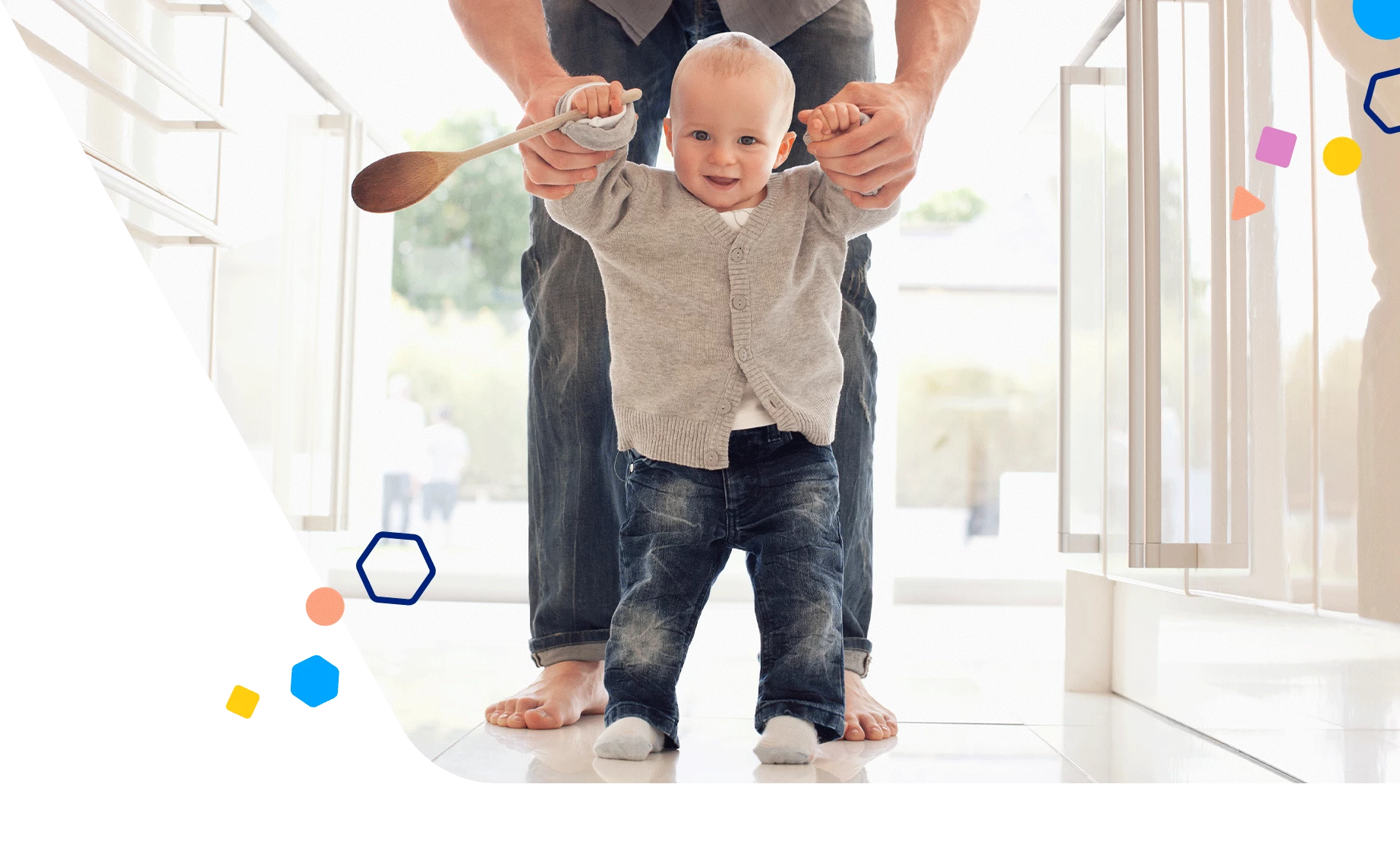Crawling infants, walking toddlers, and tiptoeing 2-year-olds are doing different activities, but they have this in common: They're all putting their gross motor skills to work. You may be thinking, "Wait—what are motor skills?" Simply put, motor skills are abilities involved in body movement. Gross motor skills feature whole-body movements (as opposed to fine motor skills, which use smaller muscles). These essential skills help children learn to move, explore, and function independently.
Children begin to develop gross motor skills as soon as they're born. When newborns raise their heads during tummy time, for example, they're engaging the muscles in their core, neck, and shoulders. Over time, as those little bodies grow stronger, they develop the ability to coordinate and plan their moves. Learn to spot gross motor skills in your little one—along with some ideas for gross motor activities that can support their development.
Gross Motor Skills: Months 1-3
In the first month, your baby will still have involuntary newborn reflexes, but you'll also start to see some more controlled body movements. Your baby may kick their feet when on their back and move their head from one side to another.
Try this activity:
Placing your awake baby on their stomach (a.k.a. tummy time) helps them develop their core, neck, and shoulder muscles. Those are the foundation for larger motor milestones to come!
Gross Motor Milestones: Months 3-6
By now, most babies are able to push up and lift their heads when placed on their tummies. And if you place your little one's feet on a firm, flat surface, they'll press her legs down in an attempt to stand up.
Try this activity:
Along with continuing to supervise tummy time, try holding your baby in an upright, standing position. Gently bouncing them will help your little one strengthen those leg muscles.
Gross Motor Milestones: Months 4-7
Sometime between 4 and 7 months old, babies begin to make some big moves! Look for your baby to roll over both ways, sit up with support, touch their feet, and even bring their toes to their mouth.
Try this activity:
If your baby is able to sit with your support, surround them with pillows (or an infant support pillow) and place them on the floor in a sitting position. Place their hands flat on the floor, in front or to the side of their body, to help thim practice self-support.
Gross Motor Milestones: Months 8-12
Now's when your baby will really start to move! Along with sitting up on their own, they’re going to love rolling around and pulling themselves up on furniture. Look for them to smile as they rock back and forth on their knees, too. It's a precursor to scooting, crawling, and even walking.
Try this activity:
To encourage crawling, try placing some favorite toys just out of your baby's reach. You can also practice walking by holding both of their hands to support their weight. Encouraging them to crawl up a set of stairs can help strengthen their leg muscles and motor planning skills. (Always stay close so you're able to catch your child in case of any wobbly moments.)
Gross Motor Milestones: Months 12-18
Congratulations—you officially have a toddler! Around their first birthday, most babies will start to walk independently. And now that they're confident on their own two feet, you'll witness them showing off new skills such as crouching, bending, and sitting on small chairs. Just try to keep up.
Try this activity:
Toddlers love to dance, so turn on some tunes and move to the music together. Children this age also enjoy playing with push and pull toys, and they're especially proud to show off how well they maneuver them around.
Gross Motor Milestones: Months 18-24
In the run-up to your baby's second birthday, you'll behold a bevy of new gross motor skills such as running, using ride-on toys, kicking balls, throwing balls overhand, and standing on tiptoe. And you thought they were busy before!
Try this activity:
Small children love playing in home ball pits, which provide opportunities to stand, sit, roll, and toss balls. Another fun idea: Let them stack and climb into cardboard boxes, which also provides an opportunity for pretend play.
What if my child misses gross motor milestones?
All children develop gross motor skills along slightly different timelines. For example, some babies start walking before they're 1 year old, and others may need a few more months. If your little one isn't meeting gross motor milestones at precisely these ages, don't panic – milestone anxiety is something a lot of parents experience. Instead, talk with your child's pediatrician to understand whether a delay warrants further investigation—or is just unique to your child's personal development.
Want to know when you might see those first signs of walking in your little one? Here's how babies go from crawling to walking—month by month, step by (wobbly) step.

